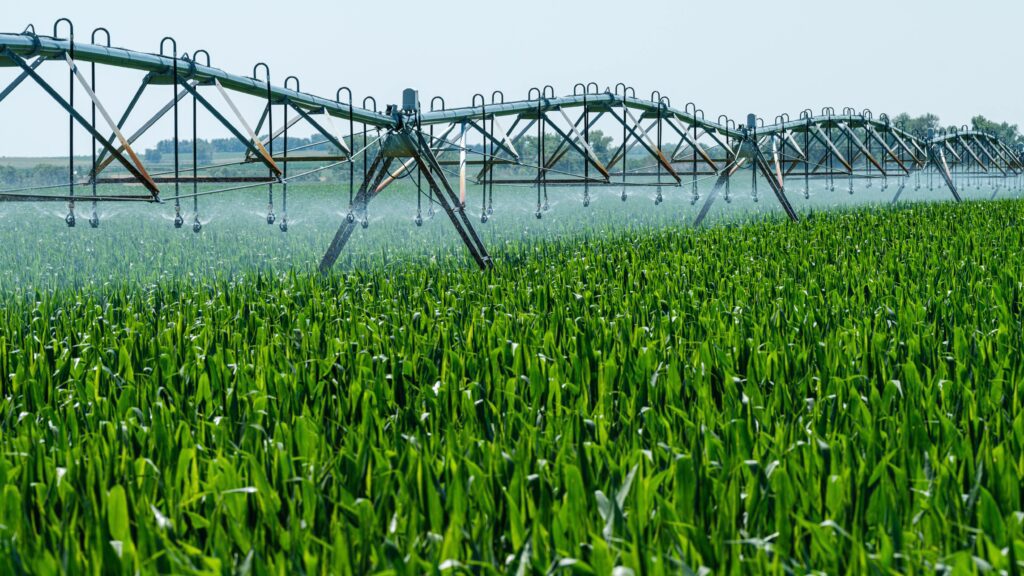Checking Out Natural Farming in Modern Agriculture
Checking Out Natural Farming in Modern Agriculture
Blog Article
Enhance Agricultural Productivity With High-Quality Water Soluble Polymers
These polymers provide a range of benefits that can change traditional farming methods, from boosting water retention and performance to maximizing dirt structure and nutrient delivery systems. By taking advantage of the power of innovative polymer remedies, farmers can possibly unlock new pathways in the direction of attaining higher crop yields while minimizing ecological impacts.

Benefits of Water-Soluble Polymers
Water-soluble polymers provide a wide range of benefits in agricultural applications due to their enhanced water retention properties and ability to enhance soil framework. Agriculture. These polymers, when included in the dirt, can substantially raise water holding capability, decreasing the regularity of irrigation needed by plants. By creating a gel-like substance when blended with water, water-soluble polymers create a storage tank that slowly launches moisture to plant origins, making sure a much more consistent water during completely dry spells
Furthermore, these polymers help in stopping soil disintegration by binding soil bits together, therefore improving dirt framework and stability. Enhanced soil structure enables far better origin infiltration and aeration, promoting healthier plant development and greater plant yields. Water-soluble polymers likewise help in nutrient retention by lowering leaching, making sure that important nutrients stay readily available to plants for a longer duration.
Improved Water Retention and Efficiency
Enhancing farming water retention and performance with the unification of innovative polymer modern technologies has ended up being a critical focus in modern-day farming practices. Water-soluble polymers play a vital function in improving dirt framework, improving water seepage, and reducing water evaporation prices. By developing a slim movie on the dirt surface area, these polymers help to stop water runoff and enhance the soil's water-holding capacity, making sure that plants have accessibility to an appropriate water system.
In addition, the use of top notch water-soluble polymers can dramatically minimize the regularity of watering, as they improve the dirt's ability to maintain wetness for longer periods. This not only conserves water but also lowers the power and labor prices connected with watering methods. In addition, enhanced water retention and effectiveness lead to much better nutrient uptake by plants, leading to boosted crop yields and general agricultural performance.
Enhanced Nutrient Distribution Solution
Offered the considerable effect of high-quality water-soluble polymers on enhancing water retention and efficiency in farming, the emphasis currently moves towards maximizing nutrient distribution systems to better improve plant development and yield. Improved nutrient shipment systems play a crucial function in guaranteeing that plants receive the essential nutrients in a form that is readily offered for uptake, promoting their general health and wellness and efficiency. By integrating water-soluble polymers into nutrient distribution systems, the effectiveness of nutrient uptake by plants can be considerably boosted.
One secret advantage of using premium water-soluble polymers in nutrient shipment systems is their capacity to regulate the launch of nutrients, making sure a regulated and stable supply to plants over an extensive period (Agriculture). This regulated launch device helps stop nutrient leaching and overflow, thereby maximizing nutrient utilization by crops and minimizing ecological impact

Dirt Framework Optimization Methods
Optimizing dirt structure is paramount in modern-day agriculture for making the most of plant returns and advertising lasting land administration practices. Soil structure optimization techniques play a crucial function in ensuring that dirt provides a suitable environment for plant development. One key strategy is the addition of natural issue, such as compost or manure, which aids improve dirt framework by improving its water-holding ability and nutrient retention.
Additionally, exercising minimal tillage or no-till farming can avoid dirt compaction and advertise the development of a healthy and why not check here balanced dirt structure. Cover chopping is an additional efficient technique that includes growing plants particularly to shield and improve the soil, protecting against erosion and enhancing soil structure.
Furthermore, carrying out plant turning approaches can aid damage pest and disease cycles, while also improving soil structure through the varying root structures of various plants. Overall, using these dirt framework optimization strategies can check bring about raised farming performance, lowered ecological influence, and lasting sustainability in farming practices.
Sustainable Solutions for Crop Yields

To attend to the obstacles of optimizing crop returns while promoting lasting land monitoring methods, checking out sustainable options becomes necessary in modern farming. One lasting remedy for improving crop returns is the use of precision agriculture techniques.
In addition, promoting plant rotation and cover chopping can aid keep soil wellness, minimize disintegration, and improve nutrition biking, eventually adding to higher yields gradually. Integrated insect administration methods likewise play a key function in lasting crop manufacturing by decreasing the dependence on chemical pesticides and advertising all-natural insect control methods.
In addition, buying study and innovation for developing drought-resistant plant varieties and climate-resilient farming methods can help reduce the influence of climate change on agriculture while guaranteeing consistent returns when faced with ecological obstacles. By embracing these lasting options, farmers can achieve greater crop yields while securing the health of the land for future generations.
Final Thought
Finally, using high-grade water-soluble polymers in agriculture provides many advantages such as improved water retention, enhanced nutrient distribution systems, and optimized dirt structure. By executing sustainable solutions for crop returns, farmers can significantly increase farming performance and performance. Agriculture. Water-soluble polymers supply a cost-effective and ecologically pleasant method to improve the total efficiency of farming methods, resulting in better end results for both farmers and the setting
These polymers supply a range of advantages that can transform conventional farming approaches, from improving water retention and effectiveness to enhancing dirt structure and nutrient delivery systems.In addition, these polymers aid in preventing dirt erosion by binding dirt bits together, consequently boosting dirt framework and security. By creating a thin movie on the you can look here soil surface, these polymers assist to protect against water runoff and increase the dirt's water-holding capacity, making sure that plants have accessibility to an appropriate water supply.
Dirt framework optimization strategies play a crucial role in guaranteeing that soil offers an optimal atmosphere for plant growth.In final thought, the use of top notch water-soluble polymers in farming uses various benefits such as improved water retention, enhanced nutrient delivery systems, and enhanced soil framework.
Report this page